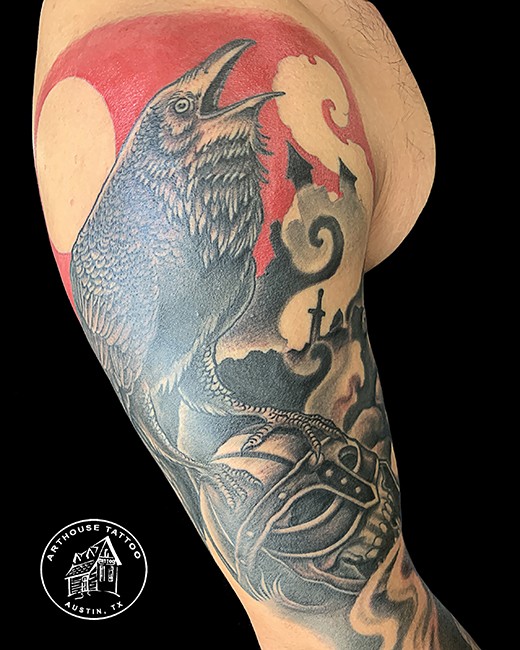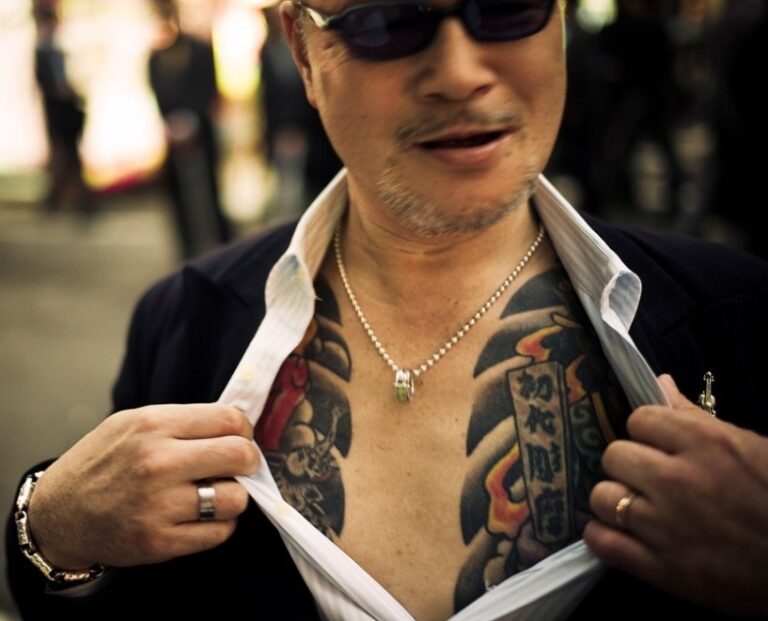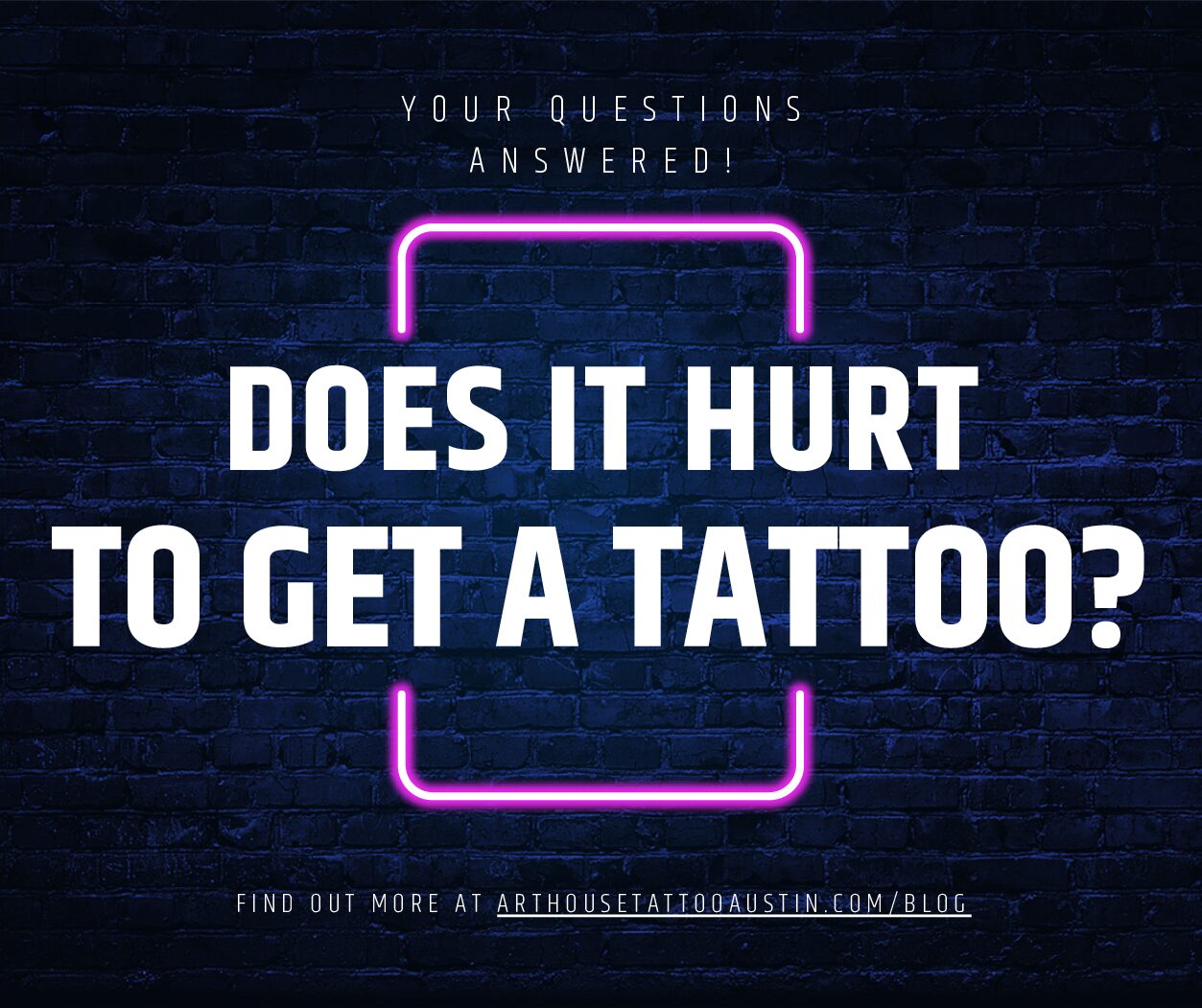Tattoo Style: The Trouble with Realism
Tattooing has been around for thousands of years. Throughout its existence particular canons emerged that are still equally important and applicable till this day. While new styles had developed and the process of tattooing had been elevated to the level of art form, the same basic canons and rules should not be ignored in favor of new tattoo art styles, as these could lead to failed results.
Realism’s popularity as a tattoo trend has surged in recent years—and for good reason. These super-realistic pieces of art boast incredible detail and, when done well, create a stunningly lifelike resemblance. But this tattoo style isn’t without its problems—and its wave of popularity has left its own surge of disappointed customers and less than brilliant tattoos in its wake.
Realism is a tattoo style
Realism is not a subject, but a style, and includes any tattoo or work of art that is meant to look realistic. The subject itself can be anything: a sweaty beer bottle, your beloved bull terrier or the great Garth Brooks.
It doesn’t matter—so long as it’s meant to look lifelike. Portraits are therefore included by definition and bring along with them all the pitfalls of accurate facial resemblance.
Overall, realism is great if you want to ‘wear’ a photograph on your skin—and while that may be exactly what you want, don’t expect it to last forever.
Aging Realism Tattoos
There are specific techniques that make a realism tattoo look true to life, but these same traits make them susceptible to fading. Realistic-looking tattoos are created with minimal line work and a lot of gradual shading to create the desired life-likeness and achieve the effects of light and shade. If in such work a minimal amount of black ink is used, the tattoo will be prone to faster fading—more so than a tattoo with a solid amount of black in it. Light shading and less saturation equals more fading.
The shading simply isn’t packed deep enough into the skin to survive with time.
In terms of a complete tattoo, if a piece is created in color, the black ink will hold up better than the rest of the tattoo, better than the color pigments. where other colors (pigment) were used. This makes color realism the most troubled…
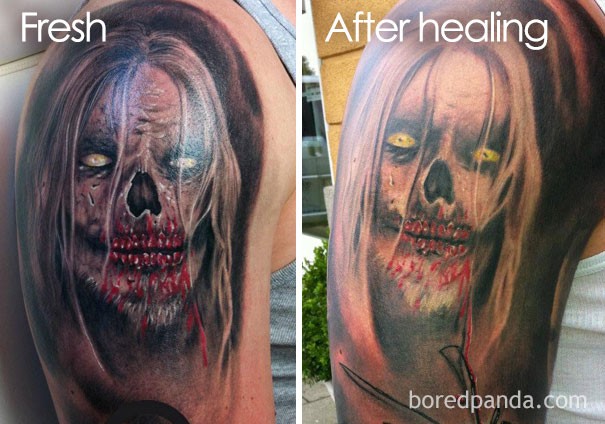
Since this style is relatively new, at least in the heightened form that’s popular now, there aren’t any twenty or thirty-year-old realism tattoos to examine. Images of five and six years old realism tattoos exist but are hard to find, possibly because of their significant fading. They’re nothing to brag about.
While those nuances will be crisp when you leave the chair with your new tattoo but sun exposure, skin regeneration, and any loss of elasticity in the skin will quickly overtake those details:


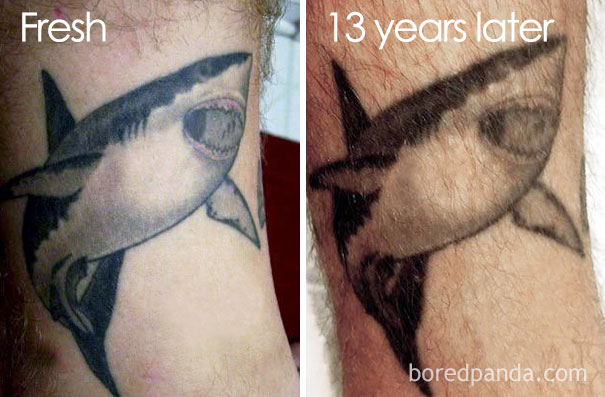
Being Realistic About Your Realism Tattoo
Let’s be realistic: being tasked to create a significant likeness from a faded snapshot or group photo is a less than ideal situation for your tattoo artist. Of course they want to give you an accurate representation of your loved one, but someone should consider taking a different approach to creating a memorable representation by translating the image into a slightly different style that will preserve some level of likeness while saving the finished tattoo from turning into a shipwreck with time—with the competent suggestion of your tattoo artist.
Of course, if you’re considering a new portrait—or any other style tattoo—we recommend that you thoroughly research any potential artists and their portfolios.
You can learn how to choose the perfect tattoo artist for you here.
